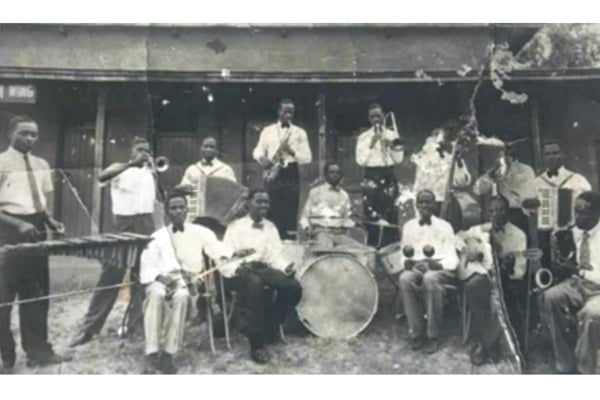
Sheebah Karungi performs at Cricket Oval in Kampala on December 2, 2016. Red’s overt association with love and passion makes its wearers appear sexy, alluring. PHOTO | EDDIE CHICCO
Many Ugandan female celebrities love the colour red. They wear it when performing on stage or attending red-carpet events. Not that they seek to blend in with some of the furniture, with respect to the latter. Rather, because the colour red has compelling, if ambivalent, undertones.
“There’s a powerfully emblematic message to wearing a red dress,” says Justine Picardie, editor-in-chief of Harper’s Bazaar. “Red is worn by cardinals, as well as the Whore of Babylon – it’s the colour of revolution and of blood, so it has more ambiguity, perhaps, than any other colour one might choose.”
Its etymology in Hebrew is the same as the word “Adam”, indicating Eve’s association with the word.
Thanks to Valentine’s Day, in Uganda, the colour red is of a piece with a two-part ensemble that spells love in all its sartorial splendour. Globally, with musicians like Taylor Swift admitting that red is her favourite colour, it has increasingly taken on hues of class, style and prestige.
On International Women’s Day in 2017, several female celebrities wore red to show their support for women around the world. Accordingly, US actress Eva Longoria posted on Instagram: “International Women’s Day is meant to celebrate the social, economic, cultural, and political successes of women while urging more gender equality! Today, I wear red as I stand in solidarity with my sisters all over the world! Honored to speak today on a panel discussion on women in the workforce for #IWD2017!”
Political red
Thanks to the rise of Opposition leader Robert Kyagulanyi, better known as Bobi Wine, and the People Power Movement, the colour red is widespread on the Ugandan political landscape. To this extent, it has expanded the colour’s prestige away from the exclusivity of celebrity to provide prestige for the masses.
This popular prestige, as it were, is known by the portmanteau word “masstige.” Yes, a combination of the words ‘masses’ and ‘prestige.’ This could explain its popularity with artistes such as Sheebah Karungi and Spice Diana: their audience is to a large extent the urban dispossessed and economically disinherited youth, which is the political base of People Power. By wearing red, then, artistes like Spice Diana are keeping the faith with the People Power faithful in the most innocuous manner.
In the thick of the Cold War, the colour red symbolised left-wing ideologies in many countries (leading to such terms as “Red Army” and “Red Scare”). This was certainly apropos, politically speaking. According to Google, since red is the colour of blood, it has historically been associated with sacrifice, danger, and courage. Modern surveys in Europe and the United States show red is also the colour most commonly associated with heat, activity, passion, sexuality, anger, love, and joy.
Love and passion
Red’s overt association with love and passion makes its wearers appear sexy, alluring. So when you see musician Lydia Jasmine adorned in red, a sort of love spell is cast. This could partly explain why her shows sell out. It could also explain her ruthless sex appeal. An appeal which carries more than a discreet hint of danger and irreligiosity as it betokens the howling siren of imminent threat. Not just to one’s loins, but to something even more forbidden.
Speaking of the forbidden, Babylon the Great, commonly known as the Whore of Babylon, refers to both a symbolic female figure and a place of evil as mentioned in the Book of Revelation of the New Testament. Her full title is stated in Revelation 17:5 as “Mystery, Babylon the Great, the Mother of Harlots and Abominations of the Earth.”
The woman of this chapter is described as being “arrayed [dressed] in purple and scarlet, and adorned with gold and precious stones and pearls, having in her hand a golden cup full of abominations and the filthiness of her fornication” (verse 4). Because of the colour of her clothing, she is also referred to as the scarlet woman of Revelation.
As a consequence, modern implications of the colour scarlet include infidelity, and amorality. This is not to say celebrities who favour red are whores. It is more to highlight the titillating pull of the colour and how it rubs off on the clotheshorses that choose to ride, so to speak, with red.
Also, red is the most popular colour among women who watch English Premiership Football in view of their partners or love interests being men who either support Manchester United, Liverpool and Arsenal. All these football clubs have more than a dash of red in their jerseys. Instead, it could be their defining colour.
Fashion statement
Red, in the world of fashion, is known as a haute hue or fashionable colour. It not only works with apparel and make-up, it also works to infuse those who wear it with an arcane fulsomeness, if you like.
“There’s an undeniable sense of power that comes with wearing red,” says Kendall Becker, the fashion and beauty trends editor for Trendalytics, a company that uses scientific data to track trends. “What’s most incredible about it is that ‘power’ doesn’t have to mean just one sentiment to every woman—for some, it may be a red power suit for the boardroom and for another, it may be a sultry number for the bedroom.”
Modern surveys in Europe and the United States show red is also the colour most commonly associated with sheer affection. In Russia “red” means “beautiful”—quite literally.




